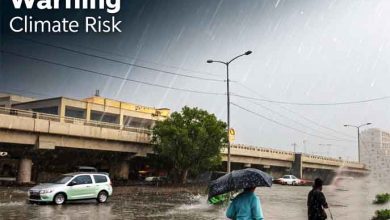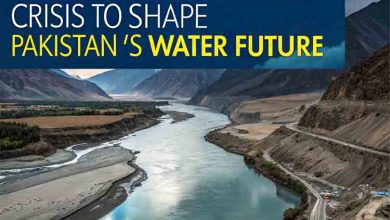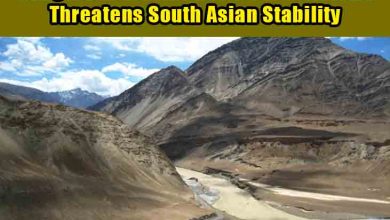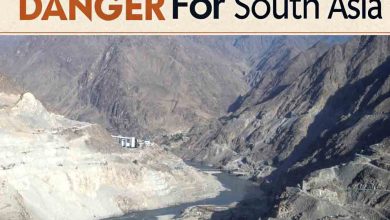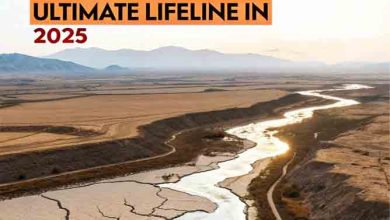After devastating floods in Pakistan, some have recovered but many are struggling a year later
ISLAMABAD (AP) — Last summer’s flooding in Pakistan killed at least 1,700 people, destroyed millions of homes, wiped out swathes of farmland, and caused billions of dollars in economic losses. All in a matter of months. At one point, a third of the country was underwater. Pakistani leaders and many scientists worldwide blame climate change for the unusually early and heavy monsoon rains.
A year on, the country hasn’t fully recovered. The aftermath runs the length of the country; survivors living in makeshift huts where their homes used to be, millions of children out of school, damaged infrastructure waiting to be repaired.
Pakistan’s national disaster authority said most people have returned to their towns or villages, but its flood records stop in November 2022. Almost 8 million people were displaced at the height of the crisis. But there is no information on how many people remain homeless or live in temporary shelters. Aid agencies and charities provide up-to-date pictures of life, saying millions remain deprived of clean drinking water and that child malnutrition rates have increased in flood-affected areas.
And the impact of recent heavy rainfall augurs ill for Pakistan should there be more flooding this year. Torrents have caused rivers to overflow, flash floods, fatalities, infrastructure damage, landslides, livestock loss, ruined crops, and property damage in parts of the country.
UNICEF estimates around 20 million people, including 9 million children, still need humanitarian aid in flood-affected areas. Many of the hardest-hit districts were already among the most impoverished and vulnerable places in Pakistan. What little people had was washed away, forcing them to start their lives over again.
This journey through Pakistan looks at how the unprecedented flooding of 2022 affected everyday life – and future generations.
The high altitudes and sharp peaks of the Hindu Kush Mountains mean that heavy rains barrel down through the northwest province of Khyber Pakhtunkhwa. That’s good because the waters quickly drain to lower lying areas. But it’s bad because of the damage they wreak along the way.
Last summer’s raging floods were so powerful that some rivers changed course. They wrecked more than 800 drinking water supply systems across nearly half of the province’s 34 districts, damaging pipelines, supply mains, storage tanks and wells.
The impact on residents living by stagnant water and forced to rely on contaminated water for drinking was seen around two weeks after the flooding. Health care teams started receiving thousands of patients with diseases like dengue, malaria, acute diarrhea, cholera and skin infections.
Villagers often had to walk several kilometers to find water. With access more difficult, water consumption dropped drastically, from 30 liters (8 gallons) per person per day before the floods to as low as 10 liters (2.6 gallons) after, according to the UK-based charity WaterAid.
he use of unprotected water sources and poor sanitation were the primary causes of morbidity in some areas, it said, especially among infants and children. Damage to health facilities and disruptions to vaccination campaigns compounded the crisis.
Rizwan Khan, 48, said last August was a nightmare for him and his family. He lost his home, belongings and crops. He was moved to a camp in the town of Charsadda, but it didn’t offer enough medical services. It wasn’t long before he and others were suffering stomach illnesses, skin infections and fevers.
WaterAid said the scale and scope of the 2022 floods would have challenged any government’s capacity in every field. But over the past year, residents with the help of local government have succeeded in repairing most of the wells and water supply systems, and the situation has improved in Khyber Pakhtunkhwa.
But last year’s floods won’t be the last or the worst disaster the province could face in the future.
The province is “burdened with an alarming and diverse portfolio” of potential weather and water disasters because of its geography, said Taimur Khan, spokesman for the Provincial Disaster Management Authority.
Khyber Pakhtunkhwa has eight major rivers running through it, as well as mountain ranges, hills, flat green plains and arid plateaus. That makes it vulnerable to earthquakes, landslides, flash flooding, glacial lake outburst floods and melting glaciers.
Climate change, global warming and shifting monsoon patterns increase the frequency and impact of such disasters.
Authorities are taking some steps to prepare. They have installed an early warning system on seven of the major rivers to monitor water levels, and a monsoon contingency plan is being put in place to minimize loss of life and damage to property. Embankments were strengthened last year ahead of the flooding, helping to avert a bigger disaster, and riverbanks breached by floods have been repaired and reinforced.
LUCKY BREAK FOR AGRICULTURE
It wasn’t the flooding that nearly killed 80-year-old Razia Bibi and her family, it was the hunger.
They used to donate wheat to needy people, but the floods washed away the wheat they’d stored for the whole year in their home in Rojhan, Rajanpur district. Then they had to wait for weeks, scrounging for food, before food supplies arrived from the government and aid groups.
“The government did not give us enough rations and no relief team could reach our village because of a dam breaking,” she said. A $175 cash give-out from the government helped ease their ordeal, she said, adding that it was thanks to God that none of her family became sick.
Last year’s images of vast stretches of farmland underwater in Punjab province raised alarm over potential massive food shortages. Punjab is Pakistan’s biggest agricultural producer and its most populated province. Millions of acres of crops nationwide were destroyed by the waters, and a major international aid agency warned that the loss could be felt for years.
In the end, Punjab was spared, largely by luck rather than preparation. Authorities installed pumps that got rid of some of the standing water on farmland, but most of the waters drained on their own, some flowing down into Sindh province, some spreading into deserted, open areas.
Waters receded in time for Punjab farmers to do the October sowing season and the result was a bumper crop. In fact, the crop was boosted because the floods also brought with them good quality soil, a blessing in disguise, and enabled expanded planting in usually barren areas.
Still, the relief came after months of real food scarcity that followed the floods – and that risks being repeated in future disasters.
Across Punjab, stores of grain were wiped out along with at least a half-million acres of crops and orchards. Irrigation channels and roads connected farms to markets were wrecked. At the peak of the crisis, food prices rose sharply, as did those of everyday items like tea and sugar, which doubled. Vegetables were scarce.
The government scrambled to help the agricultural industry, a key driver of national growth and a major employer, through the distribution of seeds and fertilizer.
But infrastructure like roads and bridges remain unrepaired in the Punjab, which contributes more than half of the national GDP.
Munir Ahmed, Riaz Khan, Babar Dogar, Abdul Sattar and Adil Jawad contributed to this report from various locations in Pakistan.
Associated Press climate and environmental coverage receives support from several private foundations. The AP is solely responsible for all content.



